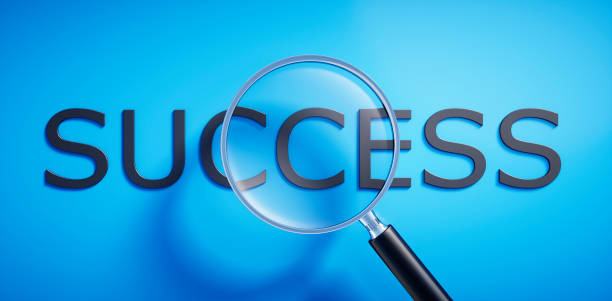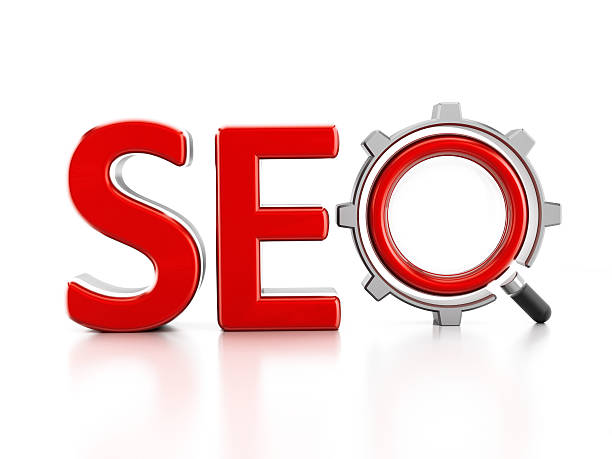What is SEO and Why Does it Matter?

What is SEO and Why Does it Matter?
SEO, or Search Engine Optimization, is a set of techniques and strategies used to improve a website’s ranking in search engine results like Google.
The main goal of #SEO is to increase organic (non-paid) website traffic by improving its visibility in search engines.
The importance of SEO is very high in today’s digital world.
Given that most users use search engines to find the information, products, or services they need, being on the top pages of search results can have a significant impact on the success of a business.
SEO helps businesses to:
- Increase Brand Awareness: By being in the top search results, your brand name is seen more.
- Attract Targeted Customers: Users who enter your website through search are more likely to be interested in your products or services.
- Reduce Marketing Costs: Compared to paid advertising, SEO is a long-term and more cost-effective strategy.
- Increase Credibility: Websites that are at the top of search results usually have more credibility.
In short, SEO is a valuable investment for any business that wants to succeed in the online world.
A site with strong SEO can attract very high traffic.
To achieve a high ranking in search results, you must have strong SEO.
Are you frustrated with the low conversion rate of your online store? Rasaweb turns your online store into a powerful tool for attracting and converting customers!
✅ Significant increase in visitor-to-buyer conversion rate
✅ Exceptional user experience to increase customer satisfaction and loyalty⚡ Get a free consultation from Rasaweb!
Introduction to SEO Types: On-Page SEO, Off-Page SEO, Technical SEO
![]()
Introduction to SEO Types: On-Page SEO, Off-Page SEO, Technical SEO
Generally, SEO is divided into three main categories:
- On-Page SEO: Includes optimizing all elements within the website, including:
- Content: Producing high-quality, relevant, and engaging content
- Keywords: Using appropriate keywords in content and tags
- Website Structure: Having a logical and user-friendly structure
- Title and Meta Description Tags: Optimizing title and meta description tags to attract users
- Page Loading Speed: Improving the loading speed of website pages
- Off-Page SEO: Includes all activities that are done outside the website to improve its ranking in search engines, including:
- Link Building: Receiving links from reputable and relevant websites
- Social Media: Activity on social networks and content sharing
- Branding: Creating a strong and well-known brand
- Content Marketing: Publishing high-quality content on other websites
- Technical SEO: Includes optimizing the technical aspects of the website, including:
- Crawlability: Ensuring that search engines can easily find and index your website.
- Mobile Compatibility: Designing the website to display well on mobile devices.
- Website Security: Using HTTPS protocol to protect user information.
- Sitemap: Providing a sitemap to search engines to facilitate indexing.
All three types of SEO are necessary for a successful SEO strategy.
Ignoring any of these can negatively affect your website’s ranking.
SEO and technical aspects are very closely related.
Keyword Research: Finding the Best Keywords for Your Business

Keyword Research: Finding the Best Keywords for Your Business
Keyword Research is the process of finding words and phrases that users enter into search engines to find the information, products, or services they need.
Choosing the right keywords is one of the most important steps in SEO because it helps you to:
- Attract Targeted Traffic: By using relevant keywords, you attract users who are interested in your products or services.
- Improve Ranking in Search Results: By optimizing your content for the right keywords, you increase your chances of being on the top pages of search results.
- Understand Customer Needs: By examining the keywords that users search for, you can better understand their needs and wants.
There are various tools available for keyword research, including:
- Google Keyword Planner: Google’s free tool for finding keywords and checking search volume.
- Ahrefs: A powerful tool for analyzing competitors, finding keywords, and checking backlinks.
- SEMrush: A comprehensive tool for SEO, content marketing, and paid advertising.
When choosing keywords, consider the following:
- Relevance: Keywords should be relevant to your products or services.
- Search Volume: Keywords should have adequate search volume.
- Competition: Keywords should not be too competitive.
- Search Intent: Pay attention to the user’s purpose for searching (e.g., is the user looking for information or intending to buy?).
By using keyword research tools and paying attention to the points mentioned, you can find the best keywords for your business and build your SEO strategy based on them.
| Keyword | Monthly Search Volume | Competition Level |
|---|---|---|
| Buy Laptop | 10000 | High |
| Best Laptop | 5000 | Medium |
| Laptop Price | 8000 | High |
Producing High-Quality and SEO-Focused Content

Producing High-Quality and SEO-Focused Content
Content is King! This famous saying in the world of SEO shows the importance of producing high-quality and valuable content.
High-quality content not only helps attract users but also helps improve your website’s ranking in search engines.
SEO-focused content is content that has been produced with SEO principles in mind.
This type of content should be:
- Relevant: Content should be relevant to your website’s topic and desired keywords.
- Unique: Content should not be copied from other websites.
- Valuable: Content should provide useful information to users.
- Readable: Content should be written in simple and fluent language.
- Optimized: Content should be optimized for desired keywords (using keywords in the title, text, tags, etc.).
There are different types of content that you can produce for your website, including:
- Articles: Educational, news, analytical, etc. articles
- Product Pages: Descriptions of products and services
- Videos: Educational, promotional, etc. videos
- Infographics: Visual images that present information attractively.
- Podcasts: Audio files in which you can talk about various topics.
When producing content, consider the following:
- Target Audience: Who are you producing content for?
- Content Goal: What goal do you want to achieve by producing this content?
- Keywords: What keywords are you using?
- Content Structure: How do you organize the content?
- Content Promotion: How do you promote your content?
Producing high-quality and SEO-focused content is an ongoing process.
By producing valuable and optimized content, you can improve your website’s ranking in search engines and attract more traffic.
In content production, SEO and the relevance of the content are related.
Does your current website convert visitors into customers, or does it scare them away? Solve this problem forever with professional corporate website design by Rasaweb!
✅ Create credibility and powerful branding
✅ Attract targeted customers and increase sales
⚡ Get a free consultation now!
Link Building: Creating High-Quality Backlinks

Link Building: Creating High-Quality Backlinks
Link Building is the process of receiving links from other websites to your website.
Backlinks act as a vote of confidence from other websites to your website and show search engines that your website is reputable and valuable.
Receiving high-quality backlinks is one of the most important factors in off-page SEO.
High-quality backlinks should:
- Be from reputable and relevant websites.
- Be received from pages with high rankings.
- Have relevant Anchor Text.
- Be created naturally and organically.
There are different ways to create backlinks, including:
- Producing high-quality and valuable content: If your content is high-quality and valuable, other websites will link to it.
- Communicating with Bloggers and Journalists: By communicating with bloggers and journalists, you can ask them to link to your website.
- Participating in Forums and Online Groups: By participating in forums and online groups, you can answer other people’s questions and link to your website.
- Creating Broken Links: By finding broken links on other websites, you can suggest that they replace the broken link with a link to your website.
- Buying Backlinks: Buying backlinks can be dangerous and may result in your website being penalized by Google.
When link building, consider the following:
- Quality over Quantity: Receiving high-quality backlinks from reputable websites is better than receiving a large number of low-quality backlinks.
- Diversity: Receive backlinks from different websites and with different domains.
- Speed: Avoid receiving a large number of backlinks suddenly.
- Relevance: Backlinks should be relevant to your website’s topic.
Link building is a time-consuming and difficult process.
With effort and patience, you can create high-quality backlinks that help improve your website’s ranking in search engines.
The impact of link building on SEO is very high.
Optimizing User Experience (UX)

Optimizing User Experience (UX)
User Experience (UX) refers to the feeling and experience a user has when using a website.
A website with a good user experience allows users to easily find the information they need, interact effectively with the website, and enjoy using it.
Optimizing user experience is an important factor in SEO.
Search engines like Google place great importance on the user experience of websites, and websites with a better user experience achieve a higher ranking in search results.
SEO is not only influential in ranking but also important in user experience.
Factors that affect user experience:
- Page Loading Speed: Website pages should load quickly.
- Website Design: Website design should be attractive, user-friendly, and responsive (display well on different devices).
- Website Navigation: Users should be able to easily navigate the website and find the information they need.
- Content: Website content should be high-quality, valuable, and relevant.
- Accessibility: The website should be accessible to all users, including people with disabilities.
- Website Security: The website should be secure and protect user information.
To optimize the user experience of your website, you can take the following actions:
- Improve Page Loading Speed: Compress images, use a CDN, enable browser caching, etc.
- Improve Website Design: Use a modern and user-friendly design, simplify website navigation, and use appropriate colors and fonts.
- Produce High-Quality Content: Produce valuable and relevant content that answers users’ questions.
- Improve Accessibility: Use alt tags for images, increase font size, and use appropriate color contrast.
- Increase Website Security: Use the HTTPS protocol, keep website software up to date, and use a firewall.
By optimizing the user experience of your website, you can improve your ranking in search engines, attract more traffic, and increase user satisfaction.
Website SEO also helps to have a better UX.
Analyzing Competitors: Examining Competitor SEO Strategies

Analyzing Competitors: Examining Competitor SEO Strategies
Competitor Analysis is the process of identifying and examining your main competitors in the industry and reviewing their SEO strategies.
By analyzing competitors, you can:
- Identify competitors’ strengths and weaknesses.
- Learn their successful SEO strategies.
- Discover new opportunities to improve your website’s SEO.
- Learn from competitors’ mistakes.
To analyze competitors, you can use various tools, including:
When analyzing competitors, consider the following:
- Keywords: What keywords do competitors use?
- Content: What type of content do they produce?
- Backlinks: From which websites do they receive backlinks?
- User Experience: What is the user experience of their website like?
- Social Media: Which social networks are they active on?
By analyzing competitors and examining their SEO strategies, you can create a strong SEO strategy for your website and outperform competitors.
Analyzing competitors in SEO helps you choose the best strategy for your business.
| Competitor Name | Top Keywords | Number of Backlinks | Domain Authority |
|---|---|---|---|
| Example.com | Buy Phone, Phone Price | 500 | 50 |
| Sample.com | Best Phone, Phone Review | 300 | 40 |
Using SEO Tools: Introducing Practical Tools

Using SEO Tools: Introducing Practical Tools
SEO Tools help you improve the SEO process of your website.
These tools can help you in various areas such as keyword research, competitor analysis, backlink checking, rank monitoring, etc.
Some popular SEO tools include:
- Google Keyword Planner: Google’s free tool for finding keywords and checking search volume.
- Ahrefs: A powerful tool for analyzing competitors, finding keywords, and checking backlinks.
- SEMrush: A comprehensive tool for SEO, content marketing, and paid advertising.
- Moz: An SEO tool with various capabilities, including keyword analysis, backlink checking, and rank monitoring.
- Google Search Console: Google’s free tool for monitoring website performance in search results.
- Google PageSpeed Insights: Google’s free tool for checking website page loading speed.
When choosing an SEO tool, consider the following:
- Your Needs: What kind of information do you want to obtain?
- Your Budget: How much can you spend on an SEO tool?
- Ease of Use: How easy is the tool to use?
- Features: What features does the tool offer?
By using the right SEO tools, you can improve your website’s SEO process and achieve better results. SEO tools make the SEO process much simpler.
Did you know that 85% of customers check your company’s website before any interaction?
With Rasaweb, build a corporate website that deserves your credibility.
✅ Increase customer credibility and trust
✅ Attract high-quality leads
⚡ Get a free website design consultation
Local SEO: Optimizing for Local Searches

Local SEO: Optimizing for Local Searches
Local SEO is the process of optimizing your website and online profile for local searches.
If you have a business that provides services to local customers, local SEO is very important to you.
With Local SEO, you can:
- Appear in Google Local Pack search results.
- Appear in Google Maps search results.
- Attract more traffic to your website.
- Attract more customers.
For Local SEO, you can take the following actions:
- Register your business on Google My Business: Create a free profile on Google My Business and provide accurate and complete information about your business.
- Optimize the website for local keywords: Use local keywords in the title, text, and tags of your website.
- Get Customer Reviews: Ask your customers to leave you reviews on Google My Business.
- Building Local Citations: Register the name, address, and phone number (NAP) of your business in local online directories.
- Local Link Building: Receive backlinks from local and related websites.
Local SEO is an important strategy for businesses that provide services to local customers.
By taking the steps mentioned, you can improve your ranking in local search results and attract more customers.
Local SEO helps local businesses to be seen more on the internet.
Monitoring and Analyzing SEO Results

Monitoring and Analyzing SEO Results
SEO Monitoring and Analysis is the process of tracking and reviewing the performance of your SEO strategy.
By monitoring and analyzing the results, you can:
- Understand how effective your SEO strategy is.
- Identify the strengths and weaknesses of your SEO strategy.
- Make better decisions about your SEO strategy.
- Measure your Return on Investment (ROI) from SEO.
To monitor and analyze SEO results, you can use various tools, including:
- Google Search Console: Google’s free tool for monitoring website performance in search results.
- Google Analytics: Google’s free tool for analyzing website traffic.
- Ahrefs
- SEMrush
- Moz
When monitoring and analyzing SEO results, consider the following:
- Organic Traffic: How much traffic from search engines enters your website?
- Keyword Rankings: For which keywords does your website rank?
- Backlinks: How many backlinks point to your website?
- User Experience: How do users interact with your website?
- Conversion Rate: How many of your website visitors convert into customers?
By monitoring and analyzing SEO results, you can optimize your SEO strategy and achieve better results.
SEO monitoring helps you to always choose the right strategy for SEO.
Frequently Asked Questions
| Question | Answer |
|---|---|
| What is SEO? | SEO, or Search Engine Optimization, is a process to increase the quality and quantity of website traffic by improving the site’s ranking in natural (organic) search engine results such as Google. |
| What are the main types of SEO? | SEO is divided into three main categories: On-Page SEO, Off-Page SEO, and Technical SEO. |
| What does On-Page SEO include? | On-Page SEO includes optimizing elements within the website, such as keywords, page title (Title Tag), meta descriptions (Meta Description), content, URL structure, images, and internal links. |
| What is Off-Page SEO? | Off-Page SEO refers to activities outside the website that help improve its ranking, such as Backlink Building, social media marketing, and Brand Mentions. |
| What is Technical SEO? | Technical SEO involves optimizing the technical aspects of the website to help search engines crawl and index it better. This includes site speed, mobile-friendliness, site structure, sitemaps, and Robots.txt files. |
| What role do Keywords play in SEO? | Keywords are phrases that users enter into search engines. Using relevant keywords correctly and purposefully in the content and site elements helps search engines understand the topic of your page and display it for relevant searches. |
| What is a Backlink and why is it important? | A backlink or inbound link is a link from one website to another. Backlinks act as a “vote of confidence” for search engines from other sites and play an important role in the credibility and ranking of the site, especially if they are from reputable sites. |
| What is the impact of high-quality content on SEO? | High-quality, relevant, comprehensive, and unique content not only attracts and retains users but also shows search engines that your page is valuable. This helps improve ranking, reduce bounce rate, and increase the time a user spends on the site. |
| Why is site loading speed important for SEO? | Site loading speed is an important ranking factor for Google. Faster sites provide a better user experience, have lower bounce rates, and are preferred by search engines. |
| Is SEO a one-time process? | No, SEO is an ongoing and long-term process. Search engine algorithms are constantly changing, competition is increasing, and site content also needs to be updated. Therefore, SEO requires continuous monitoring, analysis, and optimization. |
And other services of Rasa Web advertising agency in the field of advertising
Smart marketing automation: Designed for businesses looking to attract customers through a SEO-driven content strategy.
Smart website development: A fast and efficient solution for user engagement focusing on marketing automation.
Smart UI/UX: An effective tool to improve SEO ranking by using real data.
Smart Marketplace: An innovative platform to improve website traffic by designing an attractive user interface.
Smart custom software: A novel service to increase user engagement through user experience customization.
And more than hundreds of other services in the field of internet advertising, advertising consulting and organizational solutions
Internet Advertising | Advertising Strategy | Advertorial
Resources
SEO Overview at Moz
,SEO Guide on Search Engine Land
,Ahrefs Blog Articles on SEO
,SEMrush Blog Articles on SEO
? Are you ready to fly in the digital world? Rasaweb Digital Marketing Agency is your strategic partner on the path to online growth and success. We offer services such as SEO, online advertising, and multilingual website design, to put your business at its peak.
📍 Tehran, Mirdamad Street, next to the Central Bank, Southern Kazerun Alley, Ramin Alley No. 6




